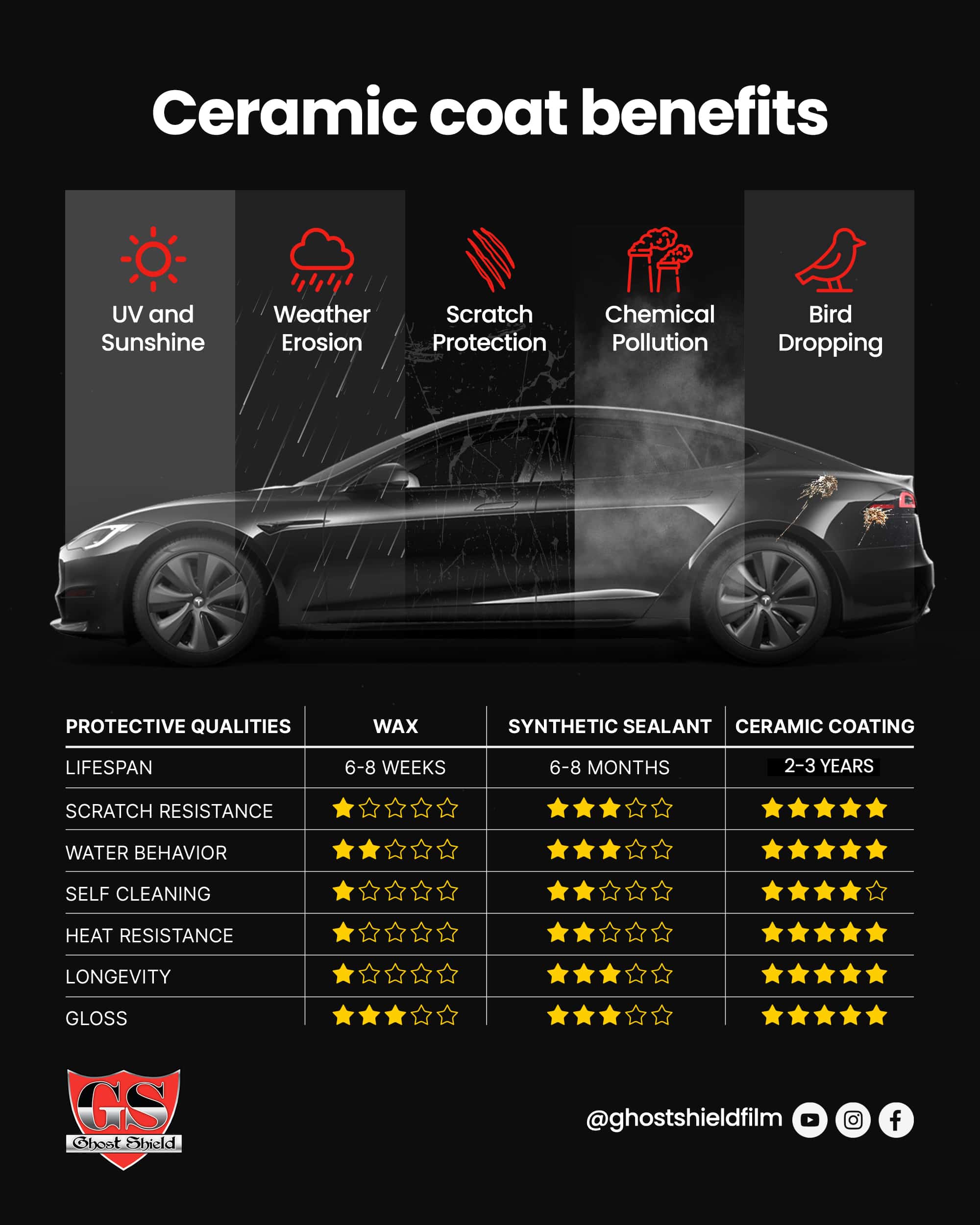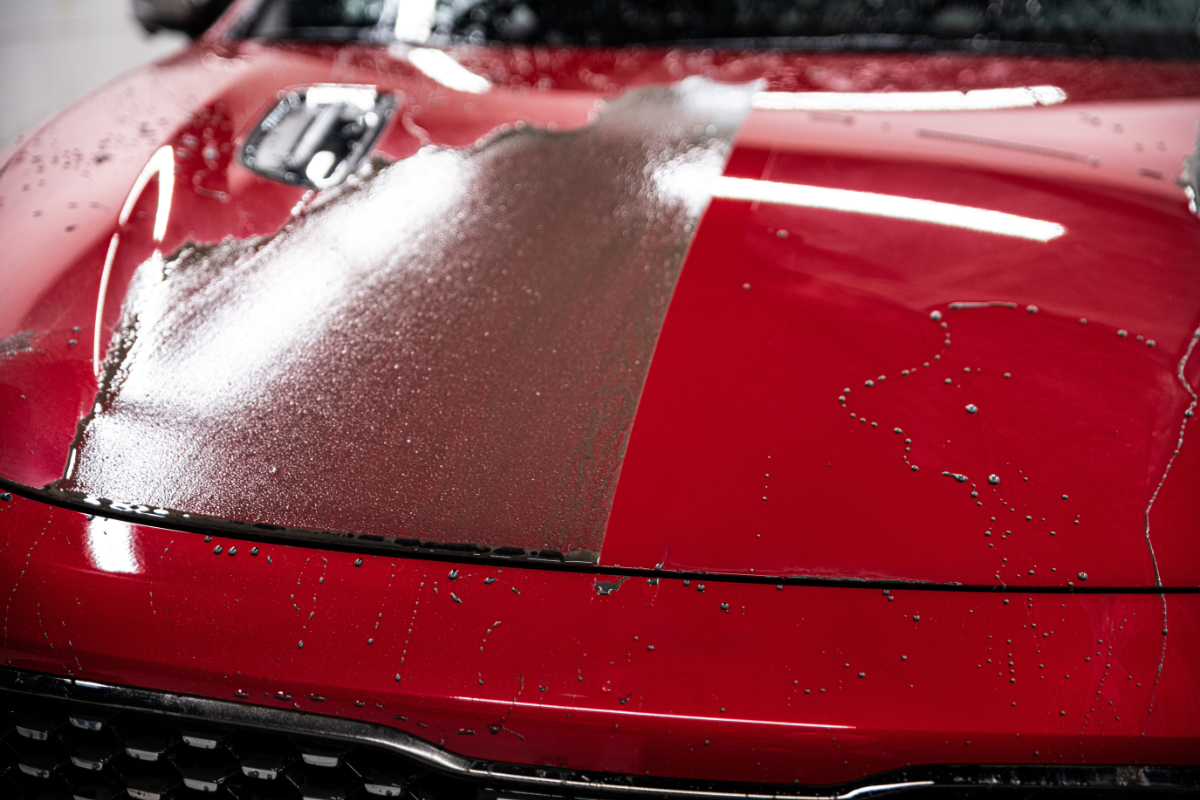Why Ceramic Finish Is the Ultimate Option for a Flawless Complete
Ceramic covering has actually arised as a leading remedy for those looking for a remarkable finish for their vehicles, thanks to its remarkable durability and protective attributes. What aspects really established ceramic finishing apart?
What Is Ceramic Layer?

When used appropriately, ceramic covering creates a hydrophobic surface area that wards off water and dirt, making it easier to cleanse and keep. Unlike conventional waxes or sealants, which commonly use short-term security, ceramic coverings can last for several years, relying on the product top quality and application technique. The procedure of applying ceramic finish requires careful prep work, including thorough cleaning and occasionally repaint modification, to make certain optimum bonding and efficiency.
Ceramic coatings are not restricted to auto surface areas; they can also be made use of on numerous materials, including glass, steel, and plastics, providing a versatile remedy for enhancing security. Overall, ceramic finishing stands for a significant innovation in surface area defense innovation, integrating both visual and practical advantages for a wide variety of applications.
Advantages of Ceramic Covering
While lots of surface area defense alternatives exist, the advantages of ceramic covering attract attention due to its special homes and lasting performance. One of the primary benefits is its exceptional toughness. Ceramic Coating Philadelphia. Unlike traditional wax or sealants that require frequent reapplication, ceramic coatings offer a resilient layer that can last for numerous years, dramatically reducing maintenance initiatives
Another notable benefit is enhanced security versus ecological pollutants. Ceramic finishes develop a hydrophobic surface that fends off water, dust, and various pollutants, making it less complicated to clean. This function not only preserves the automobile's appearance yet likewise lessens the risk of deterioration and oxidation, specifically in rough climate condition.
In addition, ceramic coverings provide premium resistance to UV rays, avoiding fading and destruction of paint in time. This UV protection is essential for preserving the visual worth of cars and surface areas subjected to guide sunshine.
Furthermore, the glossy surface accomplished with ceramic finishing boosts the total visual appeal, giving surface areas a showroom-quality sparkle. In general, ceramic finishings stand for a considerable improvement in surface defense technology, giving long-lasting advantages that satisfy both aesthetic and functional demands.
How It Works
Recognizing the scientific research behind ceramic coverings exposes exactly how they supply such impressive defense and long life. At its core, a ceramic layer is a liquid polymer that chemically bonds with the vehicle's factory paint. This bonding develops a safety layer that is both oleophobic and hydrophobic, repelling water, dirt, and oil. The key part of many ceramic coverings his explanation is silicon dioxide (SiO2), which is acquired from quartz. This compound adds to the finish's hardness and resistance to scrapes, UV rays, and ecological contaminants.
The application process entails several actions, including surface preparation, which is critical to accomplishing optimum adhesion. Once used, the finishing undergoes a curing procedure, during which it hardens and forms a semi-permanent bond with the paint surface. This bond is what differentiates ceramic coatings from standard waxes and sealants, providing a longer-lasting protective obstacle that can endure for many years.
Furthermore, the density of the finishing can boost its safety high qualities, go to my blog ensuring that it can stand up to severe problems. Inevitably, the scientific research of ceramic finishings combines innovative products with ingenious application methods to provide an exceptional degree of protection and visual improvement for cars.
Contrast With Conventional Approaches
The benefits of ceramic finishings come to be especially obvious when contrasted to conventional paint security methods such as sealants and waxes. While waxes use a temporary luster, normally lasting a couple of weeks to a pair of months, ceramic finishings provide a resilient safety layer that can withstand for a number of years. This durability dramatically minimizes the frequency of reapplication, making ceramic layers a much more cost-effective service over time.
In addition, standard approaches often require substantial prep work and multiple applications to attain an adequate level of defense. On the other hand, ceramic finishings bond at a molecular level with the lorry's surface area, producing a robust shield against ecological pollutants like UV rays, acid rainfall, and roadway salts. This bond boosts the automobile's resistance to scratches and swirl marks, which prevail with conventional waxes and sealants.
Furthermore, the hydrophobic homes of ceramic coverings push back water and dust, leading to much easier cleaning and maintenance. On the other hand, wax and sealant-treated surfaces can attract gunk, demanding even more constant washing - Ceramic Coating Philadelphia. Generally, ceramic finishes not only offer remarkable protection however additionally deliver a more aesthetically enticing and long-lasting surface, developing them as the favored choice for discerning car owners
Application and Maintenance Tips

Utilizing a foam applicator, apply the layer in small sections, complying with the producer's standards relating to density and overlap. Allow sufficient healing time in between coats, commonly 1 day, to make sure correct bonding. After application, it is critical to prevent exposure to water or extreme aspects for at least a week to permit the finish to fully heal.
Furthermore, utilizing a ceramic upkeep spray can boost the finish's hydrophobic properties and long life. Regular assessments for any type of indications of wear will certainly assist keep the finishing's stability and protect that pristine surface.
Final Thought
In verdict, ceramic finishing emerges as an exceptional alternative for attaining a flawless vehicle surface. By developing a durable bond with factory paint, ceramic finish effectively guards against scratches, UV rays, and environmental contaminants.
